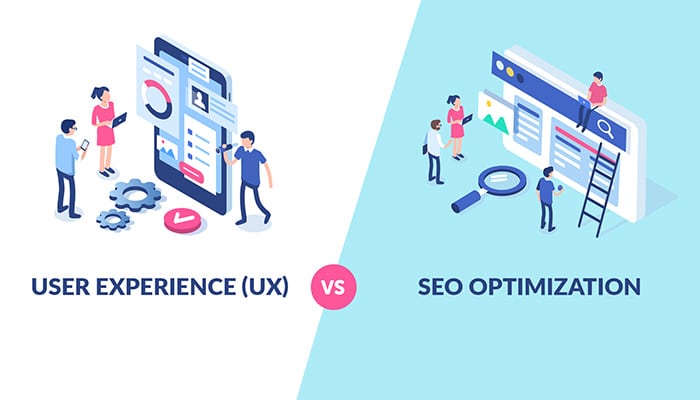Introduction
The role of user experience (UX) in search engine optimization (SEO) is often overlooked, but it is a crucial factor in the success of a website. UX refers to the overall experience a user has when interacting with a website or app, including ease of use, navigation, and design. SEO, on the other hand, is the practice of optimizing a website to rank higher in search engine results and attract more organic traffic.
While the primary goal of SEO is to improve a website’s visibility in search results, a positive UX can also have a significant impact on a website’s performance in search rankings. In this article, we’ll explore the ways in which UX can influence SEO and how to optimize both for the best results.
1.User engagement
One of the primary ways that UX can impact SEO is through user engagement. Websites that are easy to use and navigate tend to have higher levels of user engagement, as visitors are more likely to spend more time on the site and explore different pages. This can be measured by metrics such as time on site, pages per session, and bounce rate.
Search engines like Google use these metrics as signals of the quality and relevance of a website. A high bounce rate, for example, could indicate that the website is not meeting the needs of its visitors, and this could negatively impact its ranking in search results. On the other hand, a low bounce rate and high time on site could indicate that a website is providing a positive UX, which could lead to a higher ranking in search results.
2.Mobile-friendliness:
In recent years, the importance of mobile-friendliness in SEO has increased significantly. With the majority of web traffic now coming from mobile devices, Google has made it a priority to rank websites that are optimized for mobile higher in search results.
A positive UX on mobile devices is crucial for both SEO and the overall success of a website. A website that is difficult to use on a mobile device will likely have a high bounce rate, leading to a negative impact on its ranking in search results. On the other hand, a mobile-friendly website with a positive UX is more likely to rank higher and attract more organic traffic.
3.Page loading speed
The speed at which a webpage loads is another important factor in UX that can impact SEO. Visitors expect websites to load quickly, and slow loading times can lead to a high bounce rate and a negative impact on a website’s ranking in search results.
There are several factors that can affect a webpage’s loading speed, including the size of the page, the number of images and other media, and the use of external scripts. Optimizing these elements can improve the loading speed of a webpage and enhance the overall UX, which can have a positive impact on SEO.
4.Internal linking
Internal linking is the practice of linking to other pages within the same website. This can be beneficial for both UX and SEO as it helps visitors easily navigate the website and find relevant content. It can also help search engines understand the structure and hierarchy of a website, which can impact its ranking in search results.
To optimize internal linking for both UX and SEO, it’s important to use descriptive anchor text that accurately reflects the content of the linked page. This can help visitors understand the relevance of the linked page and improve the overall navigation of the website.
5.Accessibility
Accessibility refers to the ability of a website to be easily used by people with disabilities, such as those who are visually or hearing impaired. Making a website accessible can improve the UX for all users, but it can also have a positive impact on SEO.
In conclusion, user experience plays a crucial role in SEO. A positive UX can lead to higher levels of user engagement, a lower bounce rate, and a better ranking in search results. Factors such as mobile-friendliness, page loading speed, internal linking, and accessibility all contribute to the overall UX of a website and can impact its performance in search rankings. By focusing on both UX and SEO, businesses can improve the visibility and success of their website in search results and attract more organic traffic. So, it is important for businesses to prioritize both UX and SEO in their digital marketing strategy to achieve the best results.







